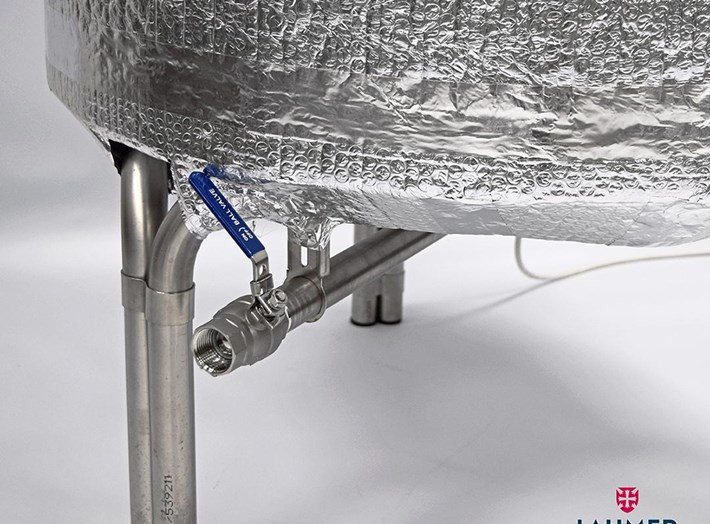
To start, it’s important to understand what is actually meant when you see the word ‘liquor’ used in a brewery situation, as in this context it is not synonymous with ‘alcohol’ as one might expect. Liquor is a term used by brewers to describe plain water. Sometimes, a Hot Liquor Tank is referred to as a ‘hot water tank’, and that’s a perfectly good description to use, but most commonly, a Hot Liquor Tank is the term that has been attached to a certain vessel.
Hot Liquor Tanks, or HLTs, do a very important job for the brewer – it creates the specific environment that is needed to begin the whole process of brewing. Too hot or too cold a water supply, and the starch conversion won’t take place (or may take place to a small extent, meaning that very little sugar is created). A period of 90 minutes is ideal for the conversion of starch to sugar, but the process isn’t over at that point either. If the hot water that the grains have been mashed in are drained from the grain/water mix at this point, much sugar will be released from the grains, but not all. The process of ‘Sparging’ needs to then take place, and the HLT is needed to perform another job.
Although the optimum temperature for starch conversion is 66C, the ideal temperature for sparging is higher still, at 78C. Sparging is what allows the grains to be ‘washed’ with further clean and hot water, to help to remove every last useable piece of sugar that the grains had when the brewer first mashed them. This washing usually takes the form of having a system which rains down hot water from above the grain – usually known as a ‘sparge arm’.
Hot Liquor Tanks are the first vessel which the brewer uses in the beer production cycle. In order for the brewer to extract sugar from the Barley grains, hot water must be added to the grains, and this is mixture of hot water and grains is known as a ‘Mash’. A chemical reaction takes place when hot water is mixed with Barley grain, and this reaction converts the starch which occurs naturally in plants into sugar. The released sugar is the fuel which is later consumed by the added yeast in order to create alcohol. The chemical reaction which converts the starch into sugar can only occur at a specific temperature – 66 degrees Celsius.
Hot Liquor Tanks are then vital for two different operations right at the beginning of the brewing process:
- The supply of hot water for mashing with Barley grains
- Sparging the grains to ensure that all of the potential sugar has been released.
The stainless steel hot liquor tanks that we supply are designed so that the brewer is able to chose an exact temperature for their water supply to be held at. Once the user has programmed the digital control panel, the stainless steel tank will automatically heat the water inside until it reaches the correct level, and the heating is then paused. Our very efficient insulation all around the tank ensures that very little heat is lost from the tank, and therefore very little extra energy is used in keeping it at the correct temperature. If the temperature level drops more than 1C below the target temperature, then the controller will add enough heat to raise it back up again. It’ll do this automatically until the water is needed at the mash stage.
After the Mash water has been used, the brewer is also able to reprogramme the target temperature so that the water will be heated to the correct sparge temperature, used about 90 minutes later.
Our HLT’s aren’t only useful to brewers. We’ve found that many other production systems are able to use the same vessel if they need water (or other liquids, for that matter) up to a temperature of 99C.
Browse our range of Hot Liquor Tanks and visit our contact page to submit your enquiry today.
